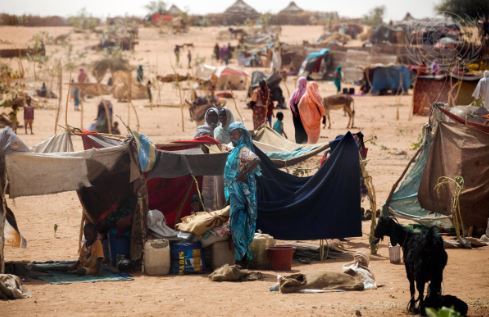Famine (IPC Phase 5) is ongoing in the Zamzam camp for internally displaced persons (IDPs) as intense conflict continues in Sudan, according to the Famine Early Warning Systems Network (FEWS NET).
In an Alert published Thursday, FEWS NET reported that reasonable evidence indicates the thresholds for Famine (IPC Phase 5) were surpassed in the Zamzam IDP camp in June.
The use of the Integrated Food Security Phase Classification (IPC) scale for Acute Food Insecurity is a landmark in the fight against global hunger. Widely accepted by the international community, this five-phase scale provides common standards for classifying the severity of acute food insecurity. IPC Phase 5 means households have an extreme lack of food and/or other basic needs even after full employment of coping strategies. Starvation, death, destitution, and extremely critical acute malnutrition levels are evident. (For Famine Classification, area needs to have extreme critical levels of acute malnutrition and mortality.)
According to FEWS NET, it is also possible that Famine (IPC Phase 5) is ongoing in two other IDP camps in the Al Fasher region – Abu Shouk and Al Salam – but limited available evidence reduces the ability to confirm or deny a classification.
“We know starvation is widespread among displaced populations in Al Fasher, where around half a million people are currently sheltering,” FEWS NET Decision Support Advisor Lark Walters said. “Without an end to this conflict, and in the absence of large-scale humanitarian food assistance, extreme human suffering will persist.”
The war between the Sudan Armed Forces (SAF) and the Rapid Support Forces (RSF) that began in April 2023 is driving the world’s largest displacement crisis. Nearly 330,000 people were displaced between April and June 2024 since the onset of the RSF’s siege of Al Fasher. This intensification of conflict has caused the destruction of essential infrastructure, cut off trade flows and humanitarian access, led to severe food shortages and steeply rising food prices, and aggravated already low access to water, sanitation, and health services.
FEWS NET has also assessed that there is a risk of Famine (IPC Phase 5) across the rest of Al Fasher – which is home to approximately 800,000 additional people – if the siege prevents them from migrating to safer areas in search of food and income for a prolonged period of time.
“While FEWS NET is most concerned about Al Fasher, the impacts of widespread conflict are driving a risk of Famine across many other areas of Sudan, including areas of Greater Darfur and parts of South Kordofan and Khartoum,” Walters said. “Humanitarian and government actors must take swift action to ensure food assistance reaches populations in need and prevents the further spread of starvation.”




